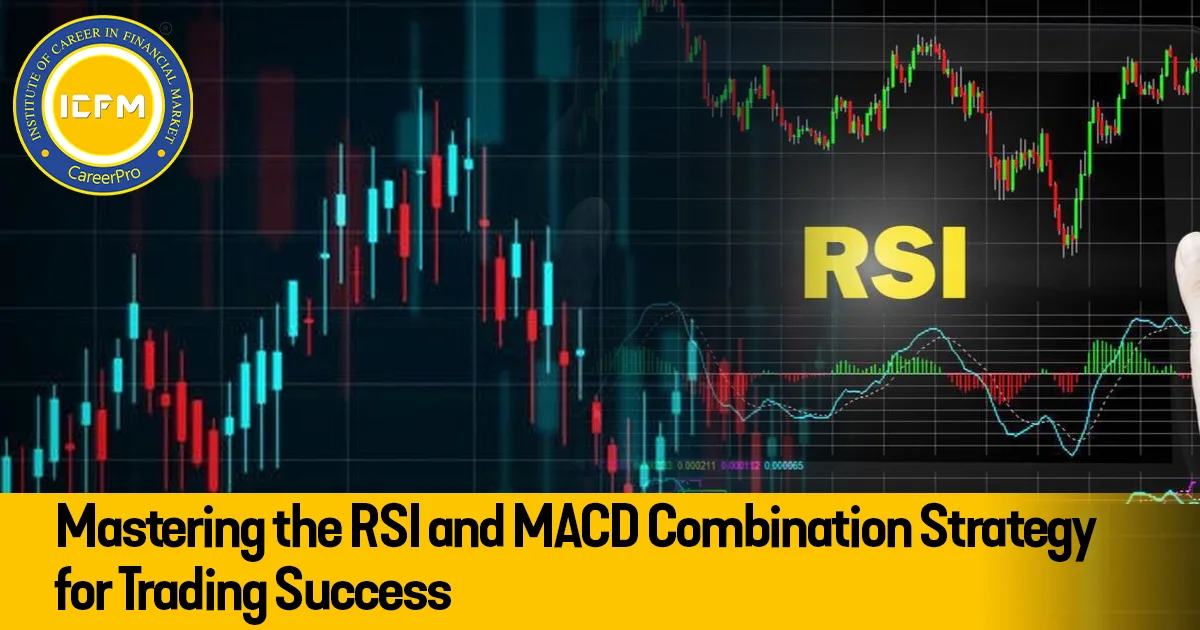Mastering the RSI and MACD Combination Strategy for Trading Success
Trading in financial markets can be thrilling but also challenging. Among numerous indicators available, the RSI and MACD are the most common ones that traders use to calculate market momentum and trend strength. These two indicators combine to create a powerful strategy for entering and exiting markets with greater confidence. So, let's explore the use of this combination effectively to improve your trading.
Understanding RSI and MACD
What is RSI?
The RSI is a momentum oscillator that measures the speed and change of price movements. It ranges from 0 to 100 and helps identify overbought and oversold conditions:
Above 70: Overbought (potential reversal or correction).
Below 30: Oversold (potential bounce or recovery).
RSI can also highlight divergence, which occurs when the price moves in the opposite direction of the indicator, signalling potential reversals.
What is MACD?
MACD is a trend-following indicator which defines the relation of two EMAs with one another usually,12-day EMA, and 26-day EMA. MACD is divided into :
- MACD Line: Shows the difference between two EMAs.
- Signal Line: 9-day EMA of MACD line.
- Histogram: Difference of the distance of MACD line and signal line
The MACD can determine both bearish and bullish crossover:
- Bullish crossover: When the MACD line crosses over the signal line above.
- Bearish Crossover: The MACD line crosses below the signal line.
Why Use RSI + MACD?
Both RSI and MACD have different strengths. While RSI is excellent at showing overbought/oversold conditions, MACD gives a good view of trend strength and direction. By using both of these tools, traders can:
- Confirm signals for better accuracy.
- Reduce false signals in trending markets.
- Spot high-probability trade setups.
The RSI + MACD Strategy
1. Spot the Trend with MACD :
-
Begin by analyzing the MACD to determine the direction of the trend in the market:
-
Bullish Trend: MACD line above the signal line and histogram in positive territory.
-
Bearish Trend: MACD line below the signal line and histogram in negative territory.
2. Evaluate RSI for Overbought or Oversold Conditions :
-
After establishing the trend, use the RSI to determine if the market is overbought or oversold:
-
In an uptrend, wait for RSI to fall to near or below 30 (oversold) before looking for a long position.
-
In a downtrend, look for RSI to move to near or above 70 (overbought) before looking for a short position.
3. Confirmation Signals :
Use both RSI and MACD signals to get a stronger confirmation:
| Bullish Setup:
-
RSI has emerged from oversold territory, say above 30.
-
MACD is showing a bullish crossover, where the MACD line has crossed over the signal line.
| Bearish Setup:
-
RSI exits overbought territory (e.g., moves below 70).
-
MACD shows a bearish crossover (the MACD line crosses below the signal line).
4. Plan Your Entry and Exit :
-
Entry Point: Enter the trade after both indicators align (e.g., bullish crossover and RSI recovery).
-
Stop-Loss: Place stop-loss below the recent swing low (for long positions) or above the recent swing high (for short positions).
-
Take-Profit: Use key support/resistance levels or risk-to-reward ratios.
Example Trade Setup :
A stock in an uptrend, the MACD histogram is positive, and the RSI has fallen below 30. It means that it is oversold. Soon after, RSI goes above 30, and the MACD line has crossed above the signal line. This is a good bullish setup:
-
Entry: Buy when both signals are confirmed.
-
Stop-Loss: Below the recent swing low.
-
Take-Profit: At the next resistance level or based on a predefined risk-reward ratio.
Tips for Effective Use
-
Avoid Overtrading: Never enter a trade unless the two indicators are in sync.
-
Combine with Price Action: Use support, resistance, and candlestick patterns to fine-tune entry and exit points.
-
Practice Risk Management: Never risk more than 1-2% of your trading capital on a single trade.
-
Backtest Your Strategy: Test the RSI + MACD combination on historical data before applying it in the live markets.
Final Thoughts
RSI and MACD: An effective combination strategy is good for both beginners and advanced traders. By employing these indicators' strengths, you will be able to better your decision-making as well as increase the potential chances of successful trades. Nothing is guaranteed, including successful strategy. Long-term profitability only comes with consistent practice, disciplined execution, and healthy risk management. Happy trading!









